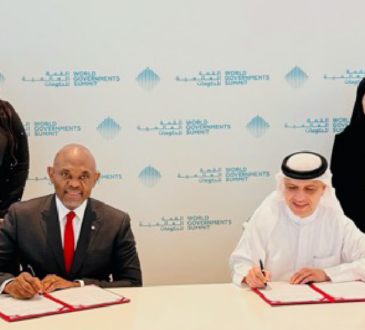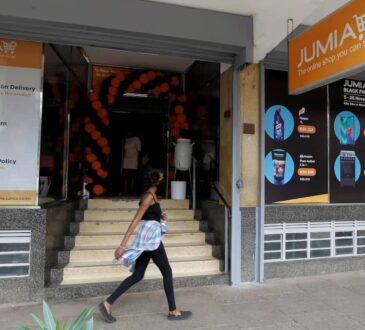
The first half of 2022 has seen mixed fortunes for the South African property market. This is according to a new report by JLL, a leading professional services firm that specialises in real estate and investment management. The Q2 report, which covers Cape Town, Durban and Johannesburg, shows that the office, industrial, retail, hospitality, and residential sectors are all growing at different rates.
Office
Within Cape Town’s office sector, semi-gration, better governance, and associated lifestyle factors continue to drive performance, albeit performing only marginally better than alternative regions in Gauteng or KwaZulu-Natal. The metropole is markedly smaller than Johannesburg or Pretoria, and therefore the influx of affluent and skilled migrants has the potential to bolster economic recovery for the city. Notwithstanding, the local economy still lacks the stimulus provided by the tourism sector that is yet to re-emerge in any meaningful form. Businesses are also not migrating to the same extent as individuals, meaning local purchasing power may be ticking up, but office demand not necessarily so.
According to the report, office development is currently at lower than conventional levels, with primarily occupier-driven development occurring. A feature that differentiates Cape Town’s office market from that of Johannesburg is that speculative development has historically been relatively low. This placed the city in a better position to handle the economic shock that was introduced by the COVID-19 pandemic and decimated office demand fundamentals. Moreover, the traditional central business district (CBD) in Cape Town has avoided the urban degradation associated with the likes of Johannesburg, Durban and Pretoria, for example.
eThekwini’s commercial market, in turn, shifted out of the traditional CBD toward uMhlanga and La Lucia’s commercial districts a few years ago and has gone from strength to strength since, barring the impact of the pandemic. Greater land availability and the degradation of the historic CBD led to this shift, and hence this node now offers the bulk of quality, contemporary stock, which is where the greatest demand is concentrated. The past six months have seen considerable take-up of vacant office space in the uMhlanga commercial node.
Mieke Purnell, Research Manager at JLL, said: “Most demand has originated from the business process outsourcing (BPO) sector, resulting in few fit-for-purpose premises remaining. Demand in eThekwini is almost solely directed toward these nodes, and the Durban CBD is thus experiencing historically high vacancies. P-grade vacancies have declined by 45% in H1 2022, and B-grade vacancies have risen by 28%. Approximately 25 000 m² of quality premises have been let to BPOs over the past six months, an exceptional uptake considering the inactivity within the commercial property market over the past two years.”
Industrial
As in many regions across South Africa, there is good demand for logistics and distribution-related industrial property in Cape Town. Borne from technological advances, booming e-commerce and global supply chain disruption, there is a country-wide distinct shortage of prime logistics inventory. The consumer is an underlying role player across the various demand drivers of industrial property, supporting the retail and manufacturing sectors that underpin the industrial sector.
In Durban, over and above the impact of the COVID-19 pandemic, the industrial market has faced externalities such as severe weather events and civil unrest that resulted in a shift in the market. Being a port city, there is strong demand for large-scale industrial premises originating from the logistics sector, both from an occupier and an investment perspective. However, the severe flooding and civil riots that took place in the greater eThekwini region over the past year have markedly impacted industrial supply.
According to the report, Johannesburg’s supply pipeline is impressive, but it is limited to occupier-driven development, as current construction costs may result in prohibitively high rentals on completion. Moreover, the pace of construction has to date been insufficient to alleviate supply shortages within the logistics sector.
Hospitality
The first half of 2022 saw a strong recovery of international tourist arrivals to the Western Cape and Cape Town – a welcome change given the reliance of this market on international visitors. Notwithstanding, neither arrivals numbers nor hotel performance metrics are at the same level reached before the pandemic.
The report notes that hotel occupancy rates virtually doubled across all property types in Cape Town, comparing H1 2022 to the same period in 2021. The five-star market recovered particularly well, recording growth of over 120%. Occupancy over this period averaged 51%, which is approximately 72% of the rate achieved between January and May 2019. Despite the recovery underway, the upper end of the market in Cape Town still has some way to go.
But it is the Durban and uMhlanga regions that registered growth in tourist numbers more than anywhere else in South Africa. With international travel disallowed during the height of the COVID-19 pandemic, the region benefitted from pent-up demand from domestic leisure tourists.
“The accessibility of this region from Gauteng, the favourable climate, quality tourist amenities and reputation for fun and relaxation bolstered its appeal. The city still boasts the best-performing hospitality market despite the tremendous health, social, climate and economic crises it has faced over the past two years,” added Purnell.
uMhlanga has proven especially popular during H1 2022, achieving an average occupancy of 63.9%. This is the highest nodal performance in the country for the period, and is closely followed by the Drakensberg and Midlands region (63.7%). Testament to the strength of the uMhlanga market segment is the recent opening of the five-star Radisson Blu (206 keys). The Hilton Garden Inn uMhlanga Arch (203 keys) is another upscale property that opened in this region recently (December 2020) in spite of the pandemic.
But things are not as rosy in Johannesburg, as the hospitality sector continues to grapple with poor corporate and leisure travel demand, especially in relation to the international market. Sandton, which historically relied on international (corporate and airlines in particular) travel and domestic and international leisure demand, was one of the worst-performing micro-markets through most of the pandemic. Both average daily rate (ADR) and occupancy metrics recovered in H1 2022, although not yet to levels achieved prior to the pandemic. Positive movement within the business and international travel from key African source markets are thought to be the primary sources of these gains.
“Occupancy in Sandton’s luxury (five star) market recorded a 110% increase year-on-year in the first half of 2022, averaging 49.7%. This sub-sector also saw annual ADR growth of 22% comparing the first six months of 2021 and 2022. The relative outperformance of this market sector is encouraging, suggesting that historical international and business travel trends may start resuming as before,” Purnell added.
Despite the challenging operating environment, there have been three hotel openings recorded in Johannesburg over the past year. This includes the Radisson Red Rosebank (222 keys), voco The Bank Hotel (131 keys), and the Hyatt House Rosebank (80 suites). The first two hotels mentioned will compete directly with the Sandton hotel market, as the primary target market in Rosebank is also the corporate traveller. A Park Hyatt hotel (30 keys) is also planned to open in early 2023. This additional supply has increased competition among existing hotels; however, investment by large brands such as Radisson and Hyatt bodes well in terms of sentiment toward the market going forward.
Residential
The residential market in Cape Town has favoured buyers for several years now, with excess stock available for sale, and prices decreasing. Conditions worsened through the pandemic when buying activity moderated, particularly from the foreign market that supports some of the higher value bands. As the pandemic progressed, there was increased interest in the local housing market stemming from semigrants to the city.
In 2021, Cape Town’s residential market was valued at R1.229 trillion (CAHF, 2022). Per the Centre for Affordable Housing Finance’s Cape Town Housing Market Report 2021, 43% of all stock is categorised as ‘luxury’ – valued at over R1 200 000. The entry-level (<R300 000) segment accounts for 16% of the market, and affordable housing (R300 000 – R600 000) comprises a further 18%. Residential sales activity in Cape Town slowed in the first half of 2022, although to a lesser extent than the moderation recorded in Johannesburg and Durban.
In Johannesburg, the recent uptick in semigration out of Gauteng to coastal regions in the Western Cape has been very topical in the context of Johannesburg’s residential market. While this is believed to have softened the market over the past couple of years and remains a risk factor overall, the impact is limited mainly to the higher value bands of the market, as Gauteng’s net migration rate remains positive.
Noteworthy residential developments underway in Johannesburg include the Orlando Towers Estates development that was recently announced, the Barlow Park mixed-use estate, and the Riverwoods Office Park redevelopment. The former comprises a lifestyle estate near the iconic Orlando Towers in Soweto. Orlando Towers Estates will aim to deliver 2 800 residential units over the five-year development timeline, arranged among complementary amenities including educational and recreational amenities.
“From a sales perspective, a rising middle class, coupled with a lower interest rate environment, has created an influx of interest in homeownership across the lower and middle housing value bands, bolstered by the pandemic-induced changes in housing needs. For obvious reasons, sales activity within Johannesburg’s residential market moderated during the pandemic. Low interest rates resulted in a decent recovery in 2021 with respect to the number of transactions recorded, and the average sales price also improved, despite asking prices falling somewhat. The first half of 2022 has seen further weakening of achieved prices and activity levels, with the stagnation attributed to lending rates rising once more, weak consumer confidence, and the rising cost of living. This trend benefits the rental market, as purchase decisions are postponed,” added Purnell.
Retail
The report notes that eThekwini’s retail market has suffered more than most since the onset of the pandemic in 2020. As in other regions, retail activity picked up in line with the easing of lockdown restrictions, but the unrest and riots experienced in July 2021 placed the sector in a severely negative position. One year on, most affected retail centres have reopened, but independent retailers are believed to still be struggling.
eThekwini benefits from several ‘destination’ retail centres that are proving popular in the current climate. Throughout most of the pandemic, neighbourhood and convenience centres were preferred as fewer people travelled far from home, but as lockdown restrictions have eased, regional centres have reported a robust recovery in footfall.
The five biggest retail centres in Durban and surrounds provide over 520 000 m² of quality retail space. These centres are Gateway Theatre of Shopping (186 526 m²), The Pavilion (122 768 m²), Galleria (87 564 m²), Ballito Junction (82 000 m²), and Chatsworth Centre (41 558 m²). The “Mall of the West” that forms part of the mega Ntshongweni Urban Development is planned to offer around 85 000 m² of additional retail accommodation. The development will also likely include smaller convenience retail outlets. Oceans Mall (±33 000 m²), under construction in uMhlanga, is expected to be completed by the end of this year.
In Johannesburg, the retail property market proved one of the stronger property sectors coming out of the pandemic, despite the major headwinds faced. Recovery within this sector is still underway as footfall and trading densities improve but are yet to reach pre-pandemic levels, and operating conditions are stabilising. Rental collections have essentially normalised once more, and the negative rental reversion trend appears to be moderating as well.
From a supply perspective, there has been little retail development over the past two years. The superior performance of smaller-format centres such as community, neighbourhood and convenience centres since even before the pandemic, alongside solid performance by national retail (supermarket) chains, has seen the likes of Redefine’s Kwena Square (10 004 m²) come to the market in H1 even as consumer confidence and economic growth nears all-time lows.
It’s clearly evident that the property market is bouncing back and will soon be on the growth trajectory if no further disruptions occur.







